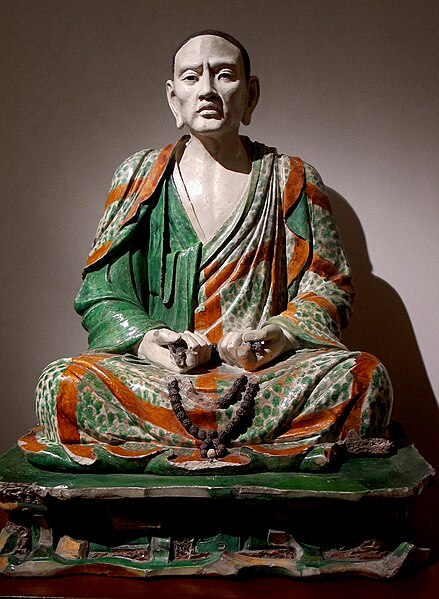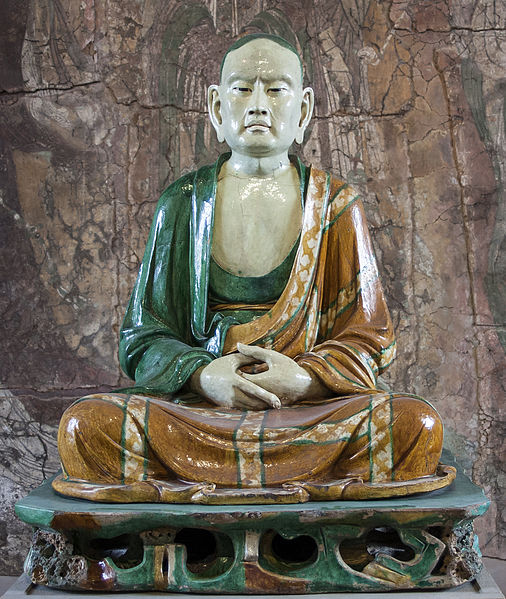Yixian glazed pottery luohans
A set of life-size glazed pottery sculptures of luohans usually assigned to the period of the Liao dynasty (907–1125) was discovered in caves at I Chou in Yi xian or Yi County, Hebei, south of Beijing, before World War I. They have been described as "one of the most important groups of ceramic sculpture in the world." They reached the international art market, and were bought for Western collections. At least eight statues were originally found, including one large fragment which was thought to have been destroyed in Berlin during World War II, but was rediscovered in the State Hermitage Museum, St Petersburg, in 2001.
Musee Guimet example
Chinese luohan hall
British Museum, Seated Luohan from Yixian
Yixian luohan from the Metropolitan Museum of Art, his head turned sharply to his right
In Buddhism, an arhat or arahant is one who has gained insight into the true nature of existence and has achieved Nirvana and liberated from the endless cycle of rebirth.
Gautama Buddha statue and 500 arhats at the courtyard of Shanyuan Temple (善緣寺), Fushun, Liaoning province, China.
Gohyaku rakan - five hundred statues depicting arhats, at the Chōkei temple in Toyama
Seated Luohan from Yixian, around 1000, one of a famous Group of glazed pottery luohans from Yixian






